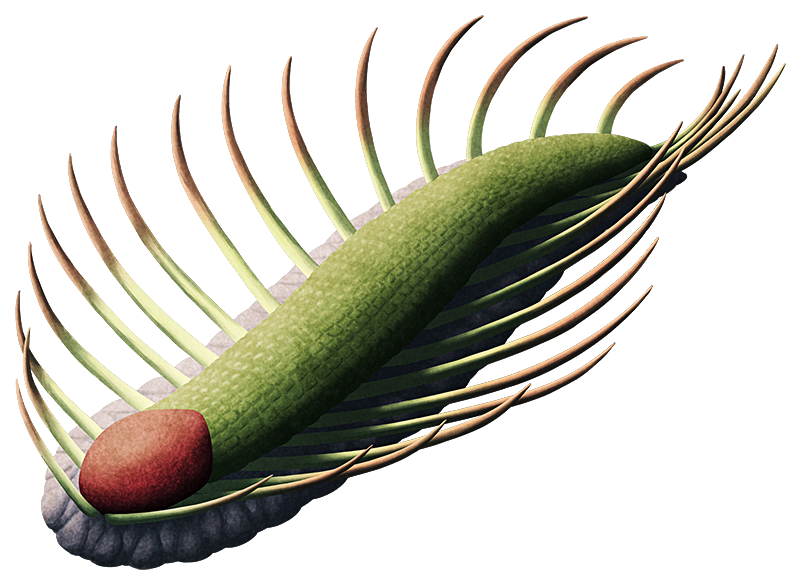The exact evolutionary relationships of the main groups of modern molluscs are rather debated, with several different proposed family trees. But one of the main possibilities is that there are two major lineages: the aculiferans and the conchiferans.
Modern conchiferans include slugs and snails, cephalopods, bivalves, tusk shells, and monoplacophorans – all groups that ancestrally have either a single-part shell or a two-part bivalved shell, with some lineages later becoming secondarily shell-less.
The ancestral conchiferans are thought to have been monoplacophoran-like molluscs, limpet-like with a cap-shaped shell, and likely diverged from a common ancestor with the aculiferans around the end of the Ediacaran. (But modern monoplacophorans probably aren’t “living fossil” descendants of early Cambrian conchiferans, and may instead be close relatives of cephalopods that have convergently become similar in appearance to their ancestors.)
Some of the earliest conchiferans were the helcionelloids, a lineage of superficially snail-like molluscs with coiled cone-shaped mineralized shells. They appeared in the fossil record at the start of the Cambrian (~540-530 million years ago) and lasted until the early Ordovician (~480 million years ago), and have been found all around the world as components of the “small shelly fauna“.
And while they’re usually tiny, only a couple of millimeters in size, they may actually represent juveniles or larvae – there’s evidence that at least some species grew up into much larger 2cm (0.8″) limpet-like adult forms.
Continue reading “Cambrian Explosion Month #25: Phylum Mollusca – Shelling Out”
